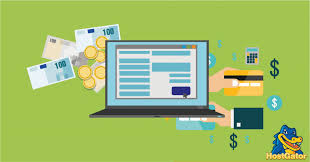Digital payments have revolutionized the way we conduct transactions, offering convenience, speed, and security. Among the various methods available, digital wallets have emerged as the most popular digital payment method globally. Platforms that facilitate easy access, like the Coyyn.com login portal, contribute to the growing popularity of digital wallets by offering secure and user-friendly interfaces. In this article, we will explore the different types of digital payments, with a focus on understanding why digital wallets have become the preferred choice for many users.
1. Credit and Debit Cards
Credit and debit cards have long been staples in the digital payment landscape. They allow users to make purchases online and in-store without the need for cash.
- Credit Cards: Enable users to borrow funds up to a certain limit to pay for goods and services, with the obligation to repay the borrowed amount plus any applicable interest.
- Debit Cards: Allow users to spend money by drawing directly from their bank accounts, ensuring that they only use funds they possess.
While widely accepted and trusted, credit and debit cards are now often integrated into digital wallets, enhancing their convenience and security.
2. Mobile Wallets
Mobile wallets, also known as digital wallets, have surged in popularity and are now considered the most popular digital payment method. They store users’ payment information securely and allow for quick transactions using smartphones or other devices.
- Examples: Apple Pay, Google Pay, Samsung Pay, PayPal, and Alipay.
- Functionality: Users can add their credit or debit card information to the wallet and make payments by tapping their device at contactless terminals or by authorizing online transactions.
The rise of mobile wallets is attributed to their ease of use, enhanced security features like biometric authentication, and the growing acceptance of contactless payments worldwide.
3. Contactless Payments
Contactless payments allow users to make transactions by simply tapping their card or device near a point-of-sale terminal equipped with Near Field Communication (NFC) technology.
- Benefits: Faster transaction times and reduced physical contact, which has become particularly important in recent times.
Many credit and debit cards now come with contactless capabilities, and this feature is also a core component of mobile wallets, further contributing to their popularity.
4. Bank Transfers
Electronic bank transfers involve moving funds directly from one bank account to another. This method is commonly used for bill payments, online purchases, and personal transactions.
- Types: Automated Clearing House (ACH) transfers, wire transfers, and real-time payment systems like the Unified Payments Interface (UPI) in India.
While secure and reliable, bank transfers may lack the immediacy and convenience offered by mobile wallets, especially for everyday consumer transactions.
5. Peer-to-Peer Payment Apps
Peer-to-peer (P2P) payment apps facilitate instant money transfers between individuals, eliminating the need for cash or checks.
- Examples: Venmo, Cash App, Zelle, and PayPal.
- Usage: Splitting bills, paying rent, or sending gifts.
Many of these apps are integrated into or function similarly to mobile wallets, contributing to the overall popularity of digital wallets as a preferred payment method.
6. Cryptocurrencies
Cryptocurrencies like Bitcoin and Ethereum offer an alternative to traditional payment methods, operating on decentralized networks.
- Characteristics: Digital assets that use cryptography for security and operate independently of a central authority.
- Usage: Online purchases, investments, and as a store of value.
Despite growing interest, cryptocurrencies are not yet widely accepted and are subject to regulatory scrutiny and market volatility, limiting their use as a mainstream payment method.
7. QR Code Payments
QR code payments involve scanning a code with a smartphone to complete a transaction.
- Implementation: Popular in countries like China and India, where platforms like WeChat Pay, Alipay, and Paytm have widespread adoption.
- Benefits: Simple to use and does not require NFC technology, making it accessible to a broader range of devices.
QR code payments are often linked to mobile wallets, further cementing the role of digital wallets as the most popular digital payment method.
8. Mobile Banking
Mobile banking apps provided by financial institutions allow customers to manage their accounts, transfer funds, and pay bills directly from their smartphones.
- Features: Account management, fund transfers, bill payments, and sometimes mobile check deposits.
While offering comprehensive banking services, mobile banking apps are institution-specific and may not provide the same level of universal payment convenience as mobile wallets.
9. Internet Banking
Internet banking enables users to conduct financial transactions through a bank’s website.
- Services: Viewing account balances, transferring money, and paying bills.
Although functional, internet banking lacks the mobility and immediacy of mobile wallets, which can be used directly at points of sale and for peer-to-peer transactions.
10. Unstructured Supplementary Service Data (USSD)
USSD technology allows users to access financial services on basic mobile phones without an internet connection.
- Usage: Common in developing countries to provide banking services to unbanked populations.
- Limitations: Limited functionality compared to mobile wallets and primarily used for basic transactions like balance inquiries and fund transfers.
In conclusion, while various digital payment methods cater to different needs, mobile wallets have emerged as the most popular digital payment method due to their convenience, security, and widespread acceptance. As technology continues to evolve, mobile wallets are likely to play an increasingly central role in the future of digital payments.

